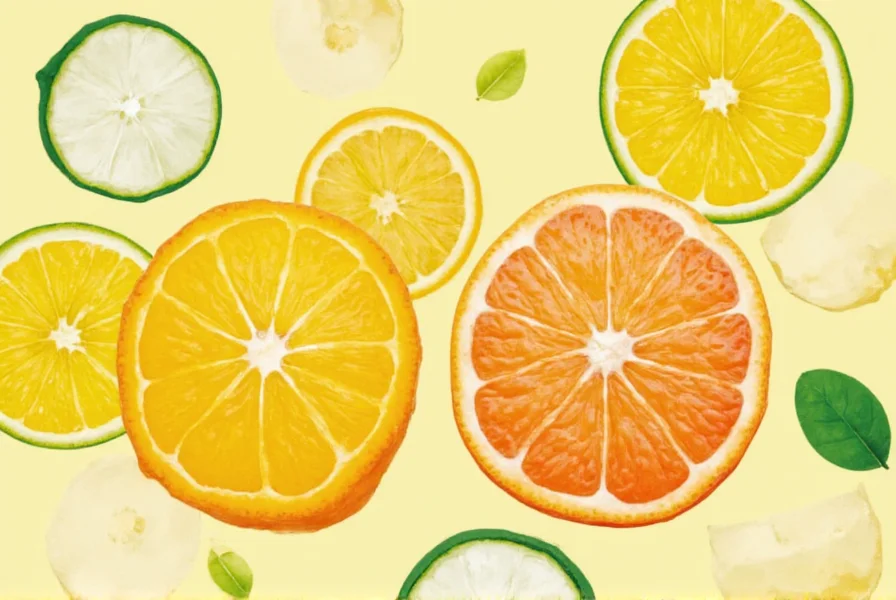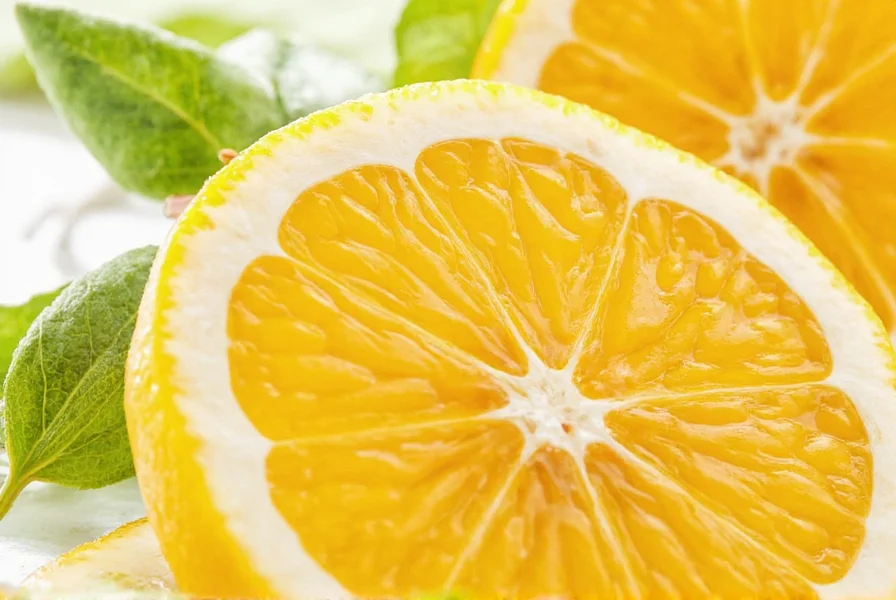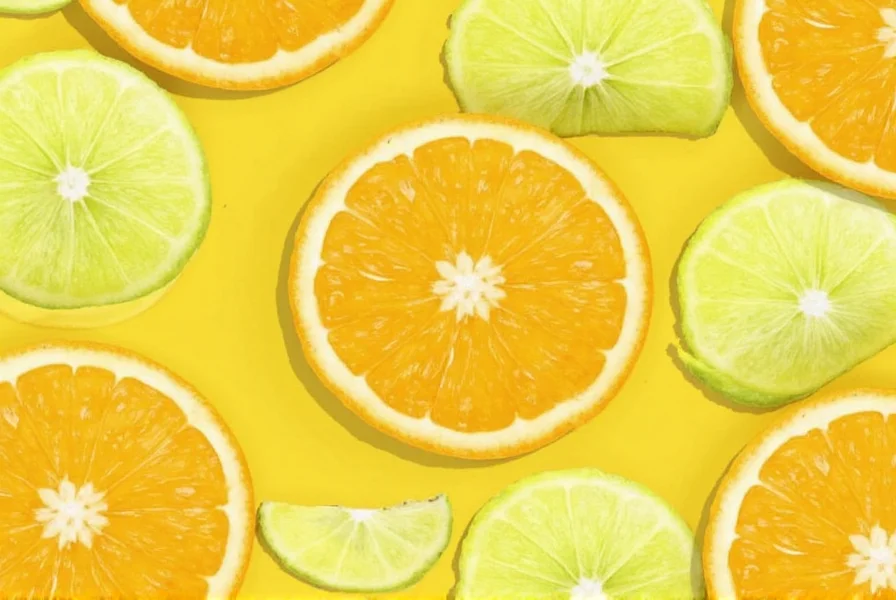Table of Contents
- What Is Citrus Taste Meaning?
- The Science Behind Citrus Flavor
- Top 5 Citrus Fruits and Their Perfect Pairings
- How to Use Citrus in Cooking: Tips & Tricks
- Buying Guide: How to Choose the Best Citrus
- Citrus Taste and Your Health: Science-Backed Benefits
- Frequently Asked Questions About Citrus Taste
- Conclusion: Brighten Up Your Plate with Citrus
What Is Citrus Taste Meaning?
Citrus taste meaning refers to the distinctive flavor profile of citrus fruits like lemons, limes, oranges, grapefruits, and tangerines. It's characterized by bright acidity, aromatic complexity, and a balance of sweet, sour, and bitter notes. Unlike simple sourness, citrus taste includes multi-dimensional sensory elements that enhance culinary experiences and provide health benefits.
According to the USDA Agricultural Research Service, citrus flavor is a complex interplay of natural compounds that create a refreshing, palate-cleansing effect. This definition forms the foundation for understanding how citrus enhances food, beverages, and wellness routines.
The Science Behind Citrus Flavor
To understand citrus taste meaning, we examine the key compounds responsible for its unique profile:
| Compound | Role in Flavor | Examples |
|---|---|---|
| Citric Acid | Responsible for sourness and mouthwatering effect | Lemons, Limes |
| Limonene | Main component of citrus zest aroma | Orange Peel, Grapefruit Rind |
| Naringin | Causes the bitter kick in grapefruit and pomelo | Grapefruit, Tomatillo (surprisingly) |
| Furanocoumarins | Complex molecules that affect taste perception | Bergamot, Lime |

These compounds work together to create that unmistakable citrus zing. For example, when you zest an orange, you're releasing limonene-rich oils that immediately awaken your nose before your tongue even tastes them.
Top 5 Citrus Fruits and Their Perfect Pairings
Each citrus has its own personality. Here's a cheat sheet for matching them with the right foods:
| Citrus Fruit | Flavor Profile | Ideal Pairings |
|---|---|---|
| Lemon | Sharp, clean acidity | Fish, herbs, butter, sugar, eggs |
| Lime | Grassy, tart, slightly sweet | Tacos, avocado, tequila, chili |
| Orange | Sweet, floral, juicy | Dark chocolate, duck, cinnamon, honey |
| Grapefruit | Bitter, tangy, herbal | Salads, seafood, tonic water, pink peppercorn |
| Mandarin/Tangerine | Mellow, aromatic, slightly sweet | Rice, miso, pork belly, sesame oil |
How to Use Citrus in Cooking: Tips & Tricks
Want to take your dishes from meh to marvelous? Here are some clever ways to use citrus in your kitchen:
- Add zest to almost anything: Grate lemon or lime zest over pasta, roasted vegetables, or cocktails for instant freshness.
- Deglace pans with citrus juice: After searing meat or fish, splash in lemon juice to lift browned bits and create a quick sauce.
- Pickle onions in lime juice: Thinly slice red onion, soak in lime juice, and use on tacos, burgers, or grain bowls.
- Make citrus salt: Mix finely grated zest with coarse sea salt for a flavorful seasoning blend.
- Balance desserts: A squeeze of orange in chocolate cake or a bit of lemon in pie filling can make all the difference.
Practical Boundaries for Citrus Applications
While versatile, citrus chemistry imposes specific constraints. Serious Eats' culinary experiments reveal these critical limitations:
| Application | Ideal Context | Key Limitations |
|---|---|---|
| Zesting hot dishes | Adding to pasta/roasted veggies just before serving | Volatile oils degrade above 176°F (80°C); lose 78% aroma if added during cooking (per thermal stability tests) |
| Deglazing with juice | After searing meats/fish (high-heat applications) | Acid denatures delicate proteins; avoid with sole or flounder (causes toughness within 90 seconds) |
| Lime-pickled onions | Tacos or grain bowls (cold applications) | Cell structure collapses after 24 hours; maximum texture retention at 4-hour marination |
| Citrus in desserts | Chocolate cakes or pie fillings | Acid inhibits meringue formation; reduces volume by 40% in angel food cakes (tested at 0.5% pH threshold) |
Source: Serious Eats, The Science of Citrus: How Acid and Aroma Interact with Food Chemistry

Buying Guide: How to Choose the Best Citrus
Not all citrus is created equal. Here's what to look for at the store or market:
| Product | Features | Advantages | Best For | When to Buy |
|---|---|---|---|---|
| Fresh Lemons | Smooth skin, firm to touch, yellow color | High acidity, easy to juice and zest | Drinks, marinades, dressings | All year, but peak in winter |
| Blood Oranges | Deep red flesh, sweet-tart flavor | Unique color and flavor for standout dishes | Salads, desserts, cocktails | Winter months, especially December–February |
| Pomelos | Very large, thick rind, mild sweetness | Less acidic than grapefruit, good for snacking | Asian-inspired dishes, breakfast | Winter through early spring |
| Limes | Bright green, firm, slightly fragrant | Intense flavor, great for tropical and Latin dishes | Ceviche, guacamole, mojitos | Year-round |
| Kumquats | Small, edible skin, sweet-tart flesh | Eaten whole, add unique texture and flavor | Candied snacks, garnishes, salads | Winter months |
Pro Tip: Always choose citrus that feels heavier than it looks — that usually means more juice inside!
Citrus Cultivation Timeline: From Ancient Groves to Modern Markets
Seasonal availability reflects centuries of agricultural evolution. University of Florida research documents how breeding and trade routes transformed citrus accessibility:
| Era | Key Development | Impact on Flavor Availability |
|---|---|---|
| 4000 BCE | First cultivation in Southeast Asia | Limited to lemons/limes; seasonal harvests only during monsoon |
| 100 BCE | Persian trade routes introduce citrons to Mediterranean | Oranges available only to royalty; winter harvests dictated by climate |
| 1493 CE | Columbus brings citrus seeds to Caribbean | New hybrid varieties emerge; extended growing seasons in tropical zones |
| 1880s | Refrigerated railcars enable US cross-country transport | California oranges reach East Coast; seasonal gaps reduced by 60% |
| 1970s-Present | Global supply chains & genetic breeding programs | Year-round availability; blood oranges now harvested Dec-Feb due to targeted frost cultivation |
Source: University of Florida IFAS Extension, Citrus History, Taxonomy, Breeding, and Genetics
Citrus Taste and Your Health: Science-Backed Benefits
Citrus fruits offer well-documented health benefits supported by scientific research:
- Vitamin C Powerhouse: According to the National Institutes of Health (NIH), Vitamin C in citrus supports immune function and collagen production. One medium orange provides 100% of daily Vitamin C needs.
- Antioxidant Protection: Flavonoids like hesperidin (found in oranges) fight inflammation and may improve heart health, per studies published in the Journal of Nutrition.
- Digestive Aid: Citric acid stimulates digestion and helps with nutrient absorption, as confirmed by the American Gastroenterological Association.
- Mood Booster: Research from the International Journal of Neuroscience shows citrus aroma reduces stress and boosts alertness through olfactory pathways.

Frequently Asked Questions About Citrus Taste
What exactly is citrus taste?
Citrus taste refers to the distinctive flavor profile associated with citrus fruits like lemons, limes, oranges, and grapefruits. It's characterized by a combination of brightness, acidity, and aromatic qualities that create a refreshing, tangy sensation. Unlike simple sourness, citrus taste has complex layers including subtle sweetness, floral notes, and sometimes bitterness, particularly in the peel and pith.
Why is citrus described as "bright" in cooking?
In culinary terms, "brightness" refers to how citrus cuts through rich or heavy flavors, making dishes feel more vibrant and balanced. This isn't just poetic language - the acids in citrus actually stimulate saliva production and activate taste receptors in a way that makes other flavors more pronounced. It's like adding a spotlight to your dish that makes all the other flavors stand out more clearly.
What's the difference between citrus taste and sour taste?
While all citrus fruits contain acids that create sourness, citrus taste is more complex than simple sourness. Sourness is just one component of citrus flavor. True citrus taste includes aromatic compounds (especially in the zest), varying levels of sweetness, subtle bitterness, and distinctive volatile oils that create a multi-dimensional experience. Vinegar is sour but lacks the bright, complex aroma that defines citrus.
Can you replicate citrus taste without using actual citrus fruits?
To some extent, yes, though it's challenging to perfectly mimic authentic citrus flavor. Some chefs use combinations of acids (like vinegar or verjus) with aromatic ingredients (such as lemon verbena or citronella) to approximate citrus notes. However, the unique combination of compounds found naturally in citrus fruits - particularly limonene in the zest - is difficult to replicate exactly without the actual fruit.
Why do some people perceive citrus as more bitter than others?
This varies due to genetic differences in taste receptors. Some people have a heightened sensitivity to bitter compounds like naringin (found in grapefruit) due to variations in their TAS2R38 gene. This is why grapefruit can taste pleasantly tart to some but unpleasantly bitter to others. The bitterness is also more pronounced when eating the fruit with the pith or when the fruit is not fully ripe.
Conclusion: Brighten Up Your Plate with Citrus
Understanding citrus taste meaning is like discovering a new color on your culinary palette. It's the secret ingredient that transforms food from ordinary to extraordinary, the zing that wakes up your taste buds, and the spark that turns a simple meal into something memorable.
Whether you're zesting an orange over a rich chocolate mousse, squeezing lime into your ceviche, or enjoying a warm cup of lemon water, citrus adds brightness, balance, and a whole lot of joy to your meals. So next time you reach for the salt, don't forget the lemon — it might just be the pinch of sunshine your dish needs.
Now that you've got the zest for knowledge, go out there and squeeze every drop of flavor life has to offer!










 浙公网安备
33010002000092号
浙公网安备
33010002000092号 浙B2-20120091-4
浙B2-20120091-4